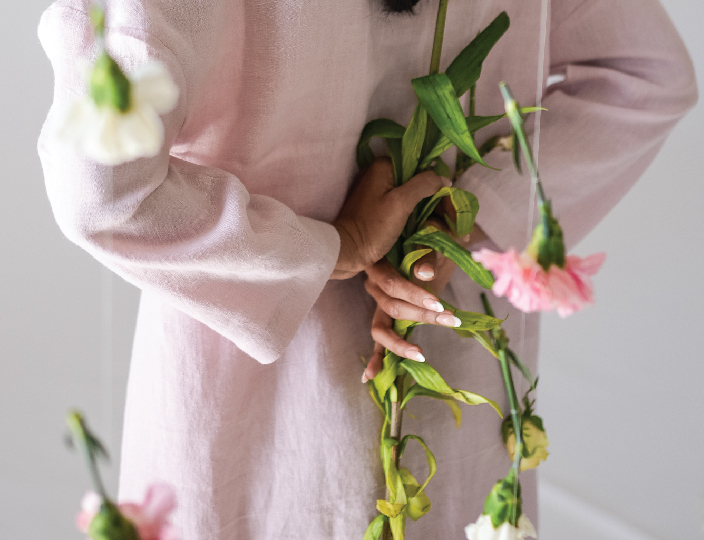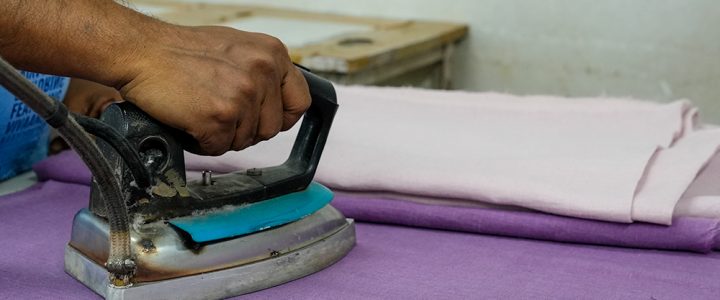Linen is a material that promises a comfort unattainable by other fabrics. This lightweight and breathable clothing wraps you like a dream and keeps you easy-breezy on those hot summer days. But when it comes to premium clothing, there is always a catch! You cannot purchase the softest fabric ever and not worry about its maintenance. Yes, linen instantly makes you a part of the “cool club”, but to maintain that status, you have to take care of your outfits.
So Can You Iron Linen?
Wondering Should You Iron Linen? Well, Ironing linen requires finesse, contrary to assumptions of unrestricted ironing practices. Linen is expensive, a delicate fabric, demands careful attention to avoid damage and maintain its pristine appearance. Ironing linen without adhering to specific guidelines can result in undesirable outcomes. Washing instructions for linen are often provided at the back of the clothing, but what about ironing them? So Can you iron linen in whichever way you want? The answer is a strict “NO”, and we will tell you why.
In this step-by-step guide, we will take you through the journey of “how to iron linen” and why your regular practice will not work.
Ironing Linen Vs. Other Fabrics: What’s the Difference?
You might be wondering, “I iron my cotton office shirts; why can’t I do the same with my linens?”. Here is what the clothing brands forget to tell you – the characteristics of every material differ. Let’s take a glimpse at it –
- Texture: Linen is one of the most natural fabrics found out there. Unlike your regular cotton or polyester materials, it does not have a smooth texture or elasticity. You will always find a bit of coarseness here and there.
- Heat Tolerance: Linen can withstand the high heat setting of your iron. But if the temperature is more than desired, your shirt will end up with more damage than before. So, understanding the best way to iron linen is essential to enhance the longevity of your beloved summer clothes.
- Moisture Absorption: What makes linen the best summer fabric out there? That’s right! It is that moisture-wicking properties. This also means that if you dampen before ironing linen, the results will be better. Water relaxes the fabric and lets you ease out those wrinkles easily.
- Finishing: There are plenty of fabrics out there that cry “starch” for the smooth finishing. But that’s not the case with your linens. While you iron linen, you don’t need to starch it. The final look will still be polished and smooth like before. All you have to remember is the right method!
Did we say the right method? Does that mean your basic ironing practices won’t cut the deal? Let’s understand more about it.
Why Basic Methods of Ironing Linen Don’t Work?
If you iron linen like you do it with all your clothes, what will the result be? Those stubborn linen wrinkles or creases will not budge! And nobody likes to slip into a creased linen outfit; that’s just a turn-off.
Linen is made from one of the superior flax fibres. All the amazing benefits aside, this fabric creases like an old-age wrinkle. Those creases are robust and sometimes don’t ease out even after continuous ironing. If the iron setting for linen is intensely high, your shirt or pants might end up with more wrinkles than ever.
Now that you are planning to steer clear of the basic ironing sessions for your linen clothing let’s take you through the right process.
How To Iron Linen: A Step-by-Step Guide
Curious about how to iron linen clothing without creasing it? We have got you covered –
- Spray water on the clothing at least 5 to 10 minutes before you start ironing. The moisture will be soaked within the fabric. Make sure to focus especially on the cuffs, collars, button plackets, and pocket flaps.
- The iron setting for linen should be high. If you are using a steam iron, its water tank should be clean and properly filled with water for effectiveness.
- Make sure that the iron board is not stained or worn out. If that’s the case, place a terry cloth over it and under the linen.
- Begin with the heavier side of your clothing and keep the lighter sections for later. Continue moving the iron continuously so that there are no wrinkles.
- If you see the shirt forming edges or lines anywhere, stretch that section. You can mould the clothing while it is still damp. This will help achieve the perfect finish.
- If you are ironing a dark-coloured linen, press it on the wrong side so that there are no shiny spots.
- Once you are done with ironing linen clothing, hang it in a cool and dry place. Give it around 15 minutes so that the fabric can ease out. It might be a little damp after ironing, and if you slip into that, there can be excess creasing. Better safe than sorry!
This is the best way to iron linen. But if you are searching for other alternatives, we have those as well.
Instructions For Ironing Different Linen Garments
Ironing linen garments is not a cakewalk. Different garments require different ironing approaches. Here’s how you can make the task simple:
How To Iron Linen Shirt
- Take the collar: always start ironing the collar of the linen shirt. You can first do the underside and shift to the outside for a better finishing.
- Iron the cuffs: cuffs are hard cloth. Make sure to iron the inside first and the outside later.
- Sleeves: start ironing the shoulder towards the cuff for a better finish.
- Whole shirt: start ironing the whole shirt from the shoulders to the downwards of the cloth. Do it for both front and back.
How To Iron Linen Trousers
- Waistband: irony the waistband first. Start the procedure from the inside to the outside.
- Pockets: iron the pockets and be careful around zippers and buttons.
- Legs: iron the inseam and work towards the outer seam for a better finish.
- Creases: do not neglect the creases. You can also use steam for a better crisp.
How To Iron Linen Tablecloths
- Shake the cloth: it is important to remove the wrinkles on the linen tablecloth.
- Iron in sections: always iron in sections starting from the middle to the edges. It will give a better iron finish.
- Use low heat setting: This is done to avoid any damage to the decorations, like embroidery, on the cloth.
- Hang the cloth: linen is fragile, and hence, after the iron, make sure to hang the cloth to avoid wrinkles.
Follow these general tips for your linen wear:
- Always use appropriate heat settings to avoid scorching or burning of the cloth.
- Use steam to remove stubborn wrinkles. Do not over-wet the linen.
- Make sure the garments are slightly damp before ironing.
- Use the pressing cloth for delicate linen garments.
- Hang the garments immediately after ironing.
Alternative Methods to Ironing
Want to get the wrinkles out, but who has the time for ironing? You might even have the time but not access to the iron. You can always go for other hacks which are easy and time-saving. Here is what you can do –
- Steamer: Steaming is a great alternative to ironing. It removes your shirt’s creases easily, and you don’t have to worry about a big board hogging up the place. Also, a steamer is always safer for clothes (and your fingers!). The only drawback is that this method may not work perfectly on heavy linens.
- Hair Straightener: Don’t have an ironing board but your straightener is right there? It will work as a substitute for the iron. It is a handy solution for pressing your shirt sleeves or collar. But a hair straightener is a temporary solution.
You cannot expect it to turn your wrinkled shirt into smooth apparel in 10 minutes like an iron will. So, is it better to steam or iron linen? Ironing is always the perfect way to go. Its final touches and texture will speak for itself.
In some cases, you may not even need to iron your linen clothing. Yes, you got it right. It is all about your style and preference. A relaxed and unpressed linen shirt looks more aesthetic, which is the look today’s generation goes for. Simply wash and dry your shirt and wear it the natural way.
Situations Where Ironing Might Not Be Necessary
Ironing a cloth is great! But what if you need a relaxed and aesthetic look? That’s when we choose to avoid ironing. Here are some styles that can go without iron:
- Casual Wear: Take T-shirts, jeans or loungewear; these do not require ironing. They are meant to be effortless and relaxed to style. Just avoid ironing and get the casual look on you!
- Linen: You can also go off the ironing for linens. As these fabrics have a relaxed and natural look, their aesthetic wrinkles can make a new fashion statement. So, charm your linen wrinkles for a casual style.
- Boho: If you are in for an eclectic aesthetic look, there is nothing better than boho. These are naturally flowing fabrics, so cut loose on the ironing part.
You can also choose to air dry the clothes and later just shed them in the air to get the perfect natural look. These fabrics look casual and do not require ironing.
Read More: Can You Bleach Linen? Expert Tips How To Bleach Linen Perfectly
Conclusion
Linen is a versatile fabric that lets you have it all. Iron it for a polished look, or leave it for a distinct attractiveness. Either way, it is all about how to enjoy styling your linen shirts and pants. The trick is to have a basic understanding of how to take care of it. This will make sure that your premium clothing hangs in your wardrobe for at least a few summers.


